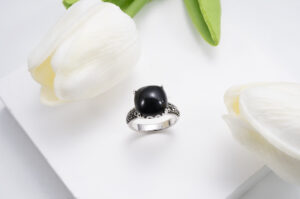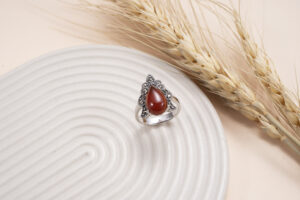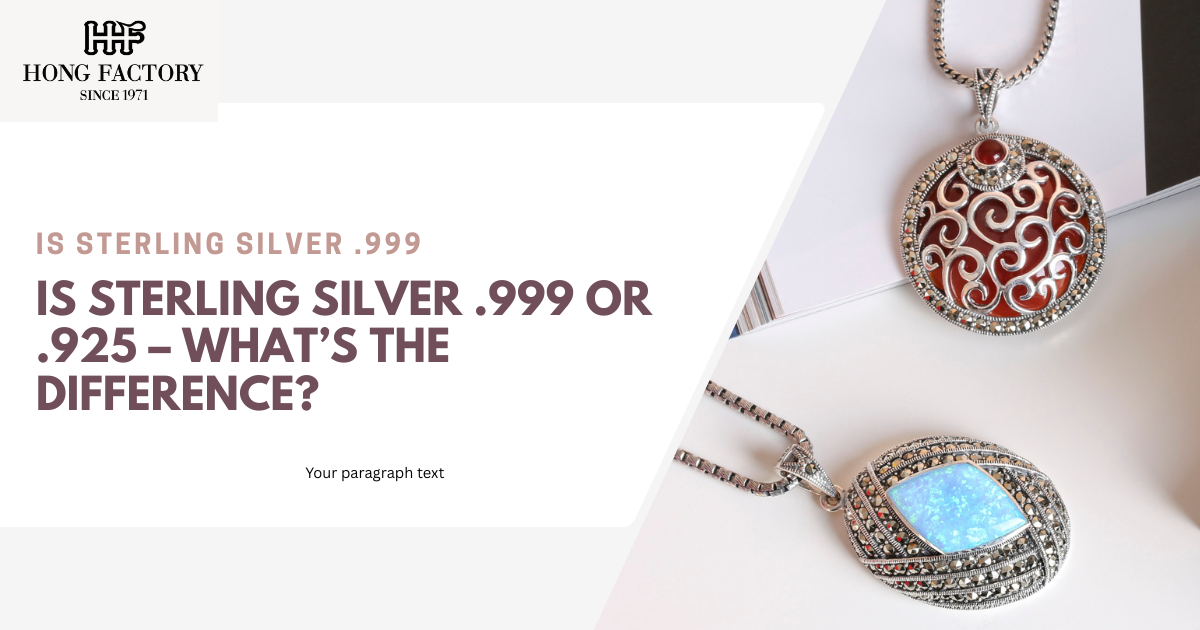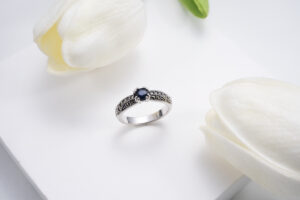Is Sterling Silver .999 or .925 – What’s the Difference?

When shopping for silver jewelry, coins, or collectibles, you might have noticed the markings .999 or .925 stamped on the surface. These numbers represent purity levels that define the quality and composition of the metal. But what exactly do they mean, and how do they affect the value and use of silver? In this article, we’ll explain the key differences between .999 fine silver and .925 sterling silver, and answer the question: what does “Is Sterling Silver .999” really mean? marcasite stone
Understanding Silver Purity Standards
Silver in its purest form is soft and malleable. While this makes it ideal for fine casting or investment bars, it’s too delicate for everyday use. To make it stronger and more durable, other metals are mixed in, forming alloys with different levels of purity. The two most common silver standards are .999 fine silver and .925 sterling silver.
- .999 Silver (Fine Silver): This type of silver contains 99.9% pure silver and just 0.1% trace elements. It’s the highest grade of silver commonly available and is often used for bullion bars, investment coins, and high-end collectible pieces.
- .925 Silver (Sterling Silver): This is an alloy made of 92.5% pure silver and 7.5% other metals typically copper. The added metal increases strength, making it perfect for jewelry, cutlery, and wearable items.
The difference between .999 and .925 may sound small, but it significantly impacts each metal’s characteristics and applications.
Is Sterling Silver .999?
The short answer is no sterling silver is .925, not .999. While both types are genuine silver, they serve different purposes. .999 fine silver is softer and primarily used for investment and display, whereas .925 sterling silver is designed for long-term use in functional or wearable products.
While both are precious and valuable, the ideal choice depends on whether you’re investing or wearing it.
Why Fine Silver (.999) Is Highly Valued
Fine silver is prized for its purity and intrinsic value. Since it contains nearly 100% pure silver, it’s often chosen by investors and collectors who want metal with high resale and melt value. .999 silver is also used in:
- Bullion coins and bars: Such as American Silver Eagles and Canadian Maple Leafs.
- High-end collectible items: Limited edition coins or medals with detailed craftsmanship.
- Industrial applications: In electronics, solar panels, and medical equipment due to its excellent conductivity.
However, due to its softness, .999 silver is unsuitable for rings, bracelets, or utensils that experience daily wear and tear.

Why Sterling Silver (.925) Is Perfect for Jewelry
Sterling silver’s slight alloy mix makes it durable enough for daily wear while retaining silver’s elegant appearance. The addition of copper doesn’t diminish its beauty but enhances its practicality. Sterling silver is commonly used for:
- Jewelry: Rings, earrings, necklaces, and bracelets.
- Household items: Cutlery, picture frames, and décor.
- Artisan pieces: Handmade crafts and fashion accessories.
Over time, sterling silver can tarnish due to the copper content reacting with air and moisture. Fortunately, regular cleaning and proper storage restore its shine easily.
How Purity Affects Value
The value of silver is influenced by both its purity and its market form. .999 fine silver generally commands a higher price per ounce because it’s nearly pure and easier to melt or trade. Sterling silver, on the other hand, has a slightly lower melt value but can hold higher artistic or brand value when crafted into luxury pieces.
For example:
- 1 ounce of .999 silver might be worth $45, reflecting pure metal value.
- 1 ounce of .925 sterling silver would contain 0.925 ounces of pure silver, worth around $41.60, depending on market rates.
Yet, a well-crafted sterling silver ring from a designer brand may far exceed the melt price, demonstrating how craftsmanship adds intrinsic worth beyond purity.
Identifying Real Silver Markings
To ensure authenticity, always check for purity stamps:
- “.999” or “Fine Silver” – Indicates nearly pure silver, typically on coins or bullion bars.
- “.925” or “Sterling” – Marks jewelry and decorative items made of sterling silver.
Some counterfeit items may display false markings, so it’s wise to buy from reputable dealers and look for certificates of authenticity.
Which Should You Choose – .999 or .925?
The best type of silver depends on your purpose:
- Choose .999 Fine Silver if you want to invest in precious metals or collect high-purity coins.
- Choose .925 Sterling Silver if you want durable, beautiful pieces for everyday use.
In essence, fine silver is for investors, while sterling silver is for creators and wearers. Both hold genuine value, but they serve different roles in the world of silver craftsmanship and trade.
Understanding the difference between .999 and .925 silver helps buyers make informed choices about quality, value, and purpose. While .999 fine silver shines in purity and investment appeal, .925 sterling silver stands out for strength, elegance, and practicality.
So, the next time you wonder, “Is Sterling Silver .999?” remember, it’s not. But that’s precisely what makes sterling silver so special: it balances beauty, durability, and affordability in a way pure silver never could.

